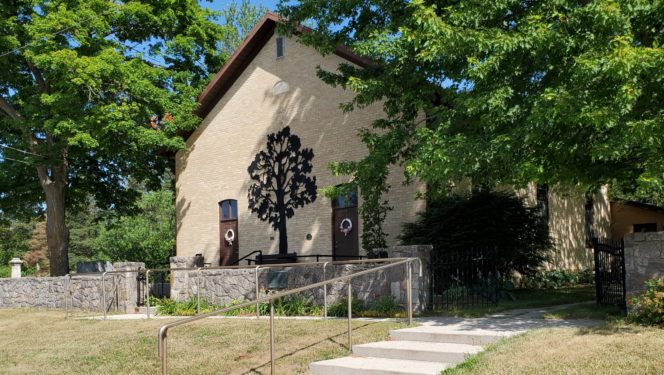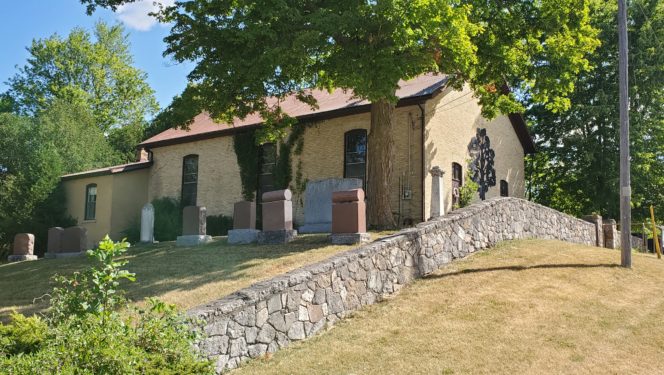Knox Presbyterian Church and Cemetery - Digital Archive
The Digital Archive provides historical information on properties that are included on the Township’s Heritage Register. The Digital Archive only includes properties which have consented to include their heritage property on this archive.
Knox Presbyterian Church and Cemetery

Biographical Info
The Knox Presbyterian Church was built in 1882, on land originally belonging to Alexander Fraser. Previously, a frame church stood on the site from 1854 to 1882. A model of the 1854 frame church is in the collections of the Wellington County Museum. The current yellow brick schoolhouse-style church with front gable was contracted by Duncan McPherson and Scottish mason William McDonald. The Crieff Presbyterian Cemetery is on the same lot, opening in 1854, when the original frame church was built. Although starting to the east of Knox Church, today the Crieff Cemetery surrounds the building.
The property is historically associated with Scottish immigration, Gaelic language, and Colonel J.B. McLean. McLean’s father was Minister of the Church and brought over from Scotland because he could speak Gaelic. Gaelic services were held in the church until the early twentieth century.










